
Physiology News Magazine
Twenty years of Society magazines
The Physiological Society Committee Newsletter - forerunner of the Newsletter, the Magazine and, most recently, Physiology News - was conceived in 1983 by the then Committee Secretary Joe Lamb. Past Editors look back on their time in the hot seat
Features
Twenty years of Society magazines
The Physiological Society Committee Newsletter - forerunner of the Newsletter, the Magazine and, most recently, Physiology News - was conceived in 1983 by the then Committee Secretary Joe Lamb. Past Editors look back on their time in the hot seat
Features
https://doi.org/10.36866/pn.54.30

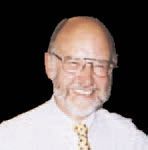
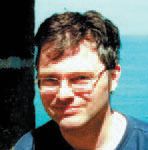
The origin of the Newsletter
Joe Lamb
I became Committee Secretary in 1982, without having first been Meetings Secretary, for Charles Michel wished to stop after running the Society’s meetings. Once I settled in I realised that, although the Society ran very good, well attended meetings and published excellent journals, other societies were leaving us behind with certain ‘housekeeping’ functions. This arose, I think, largely because the Committee Office was moved every 3 years to a new location, so there was little continuity. I looked at how other societies operated and suggested that we start a Newsletter for general news items and to increase communication between Members and the Executive; arranged for Heads of Departments to meet to discuss their common problems; and approached the Wellcome Trust to fund a lecture for young physiologists, ideally those in less fashionable departments. We also, uniquely, started an organisation to lobby the Government on the low level of funding for basic science (see p. 28). After some discussion the Committee agreed to these changes and so the Newsletter was born, initially as cyclostyled sheets edited by John Stephens, but eventually it grew into its present healthy form.
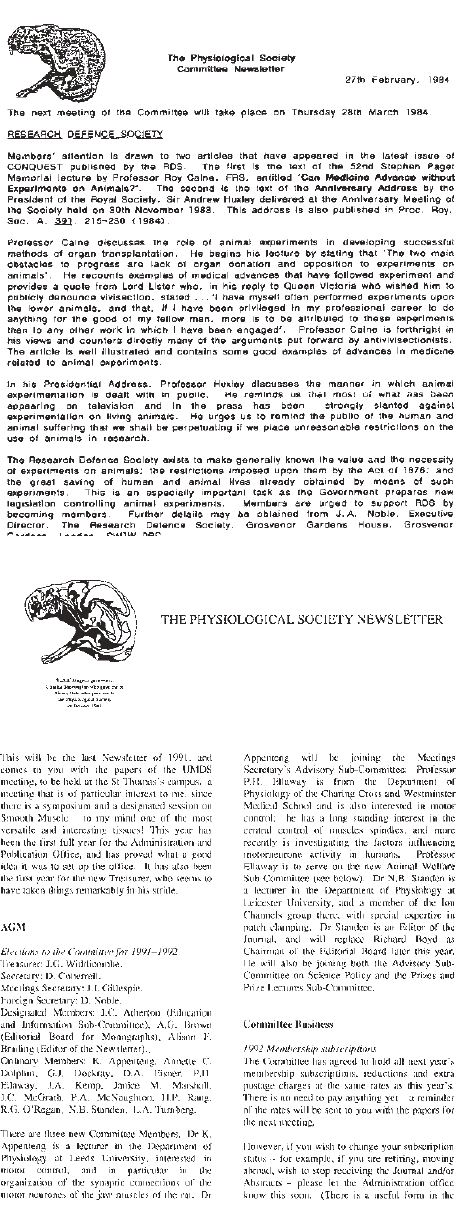
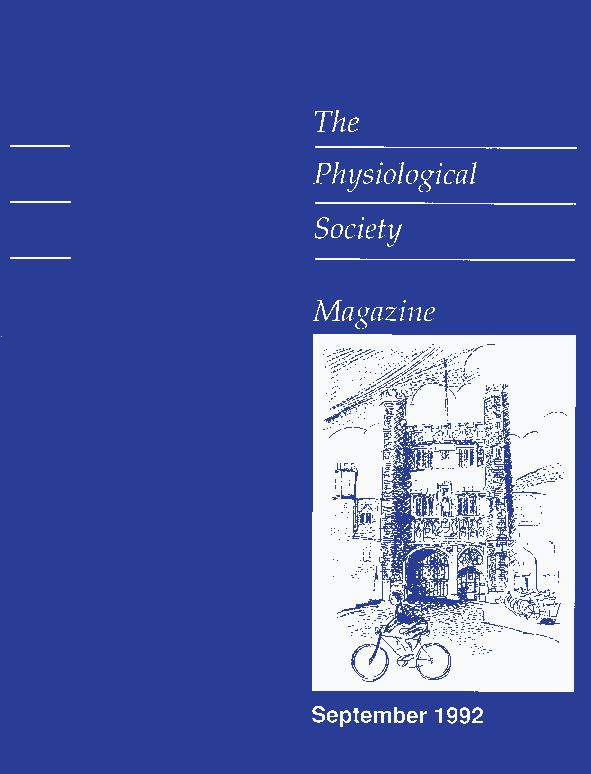
John Stephens, 1983 – 1984
Known for my after-dinner speaking at Society Meetings, and as a member of the younger generation on the Committee, I was asked by the then Honorary Secretary to put together a newsletter. This was intended to improve the poor communication that existed between the Committee and Ordinary Members of the Society. But so concerned were members of the Committee about what I might say, that they decided they should vet the tua, Cec Kidd). This issue soon came to dominate the affairs of the Society and its Officers. In tune with the times I selected a picture of the Society Dog to be the logo of the newsletter.
Tony Short, 1984 – 1988
My recollection of the Committee newsletters are of their being very slight affairs, designed originally to summarise Committee discussions for the membership as a whole rather than the minority who attended the Annual General Meeting. They gave no hint of what their successor, the magazine, would become.
Alison Brading, 1989 – 1992
At the time of my election to the Physiological Society Committee in 1988, it was customary for one of the newly appointed members to take on the editorship of the Society’s Newsletter, and I was persuaded to take over from Tony Short (then a lecturer in the Physiology and Pharmacology Department of the University of Nottingham Medical School) who had served his term.
At that time this was very much a ‘one man show’. It was up to the Editor to compose, type and produce the Newsletter, usually twice a year, and get sufficient copies made for distribution with the Meeting papers to Members of the Society. In those days there were still nine meetings a year, and the tradition that there were always Society Meetings at University College (London), Oxford and Cambridge was just being revised, with each department agreeing to give up one Meeting in five to allow them to be held in more departments. The idea for the newsletter was to get one out before the AGM, and one at a later Meeting to report any outcomes from the AGM.
I was responsible for at least six issues, the last being in October 1991. I learnt a lot during that time about producing material for publication. I used a Macintosh computer, but there was little specialized software available at that time. I was fortunate in having a colleague with a much greater knowledge of desk-top publishing and a very sharp eye, who was willing to criticise (vigorously) my efforts. I learnt about layout, columns, fonts, em and en spaces and dashes, small caps and sundry other things, and had my punctuation corrected. The look of the Newsletter improved, and it grew somewhat in size, the last issue being six pages long! During 1991 the Society set up an Administration and Publications Office in Oxford, and in 1992 Kwabena Appentang (then Lecturer in the Department of Physiology at Leeds University) became Editor of the Newsletter, and the Office took over its production. (We have been unable to contact Kwabena for a comment. Ed)
There is no doubt but that the Newsletter in my day was somewhat boring, and only a poor forerunner of the elegant Physiology News of today. The main problem was that, apart from Committee and Society business, Editors relied on Members to provide the material for the newsletter, and it was a constant disappointment to me how few actually contributed anything. I tried to encourage cartoons, but only elicited one from Heather Dalitz – key member of the Office staff at that time – showing the then Treasurer, Julian Jack, gloating over the Society’s monetary assets on one side and dreaming about neurones on the other side of a frantically working administrative officer. Tilli Tansey from the Wellcome Institute contributed some interesting ‘Traces of the Past’, and I started a column for people looking for a good home for their old journals. Apart from that, it was a useful medium for keeping members abreast of what was happening in the society, but otherwise, I have to admit -dull.
Saffron Whitehead, 1994 – 1998
It all started at a Physiological Society dinner (at the Royal Free to be precise) where I was sitting on a table with Kwabena (then Editor). With glass of wine in hand, he started talking about The Physiological Society Magazine and I started retaliating about my hobby as a freelance journalist. I like to blame the excess of good wine for my ability to show off as I did.
The upshot of my indiscretions was that Kwabena asked me to write and commission some articles about Science and The Media. These were printed in the April and June issues in 1993. The next step followed – Richard Boyd phoned out of the blue to ask if I would like to become Editor of The Physiological Society Magazine. Flattery – yes: caution – sleep on it: but I knew I would say yes. I accepted the next day and (I regret) without approval of my then Head of Department. So that’s how I ended up as Editor.
The central office of the Society was then in Oxford and I was duly invited up to learn the ropes. For a while the Magazine production was shuffled between Oxford and London, where I am based, but finally the whole production of the Magazine was transferred to St George’s Hospital Medical School. At that time John Widdicombe (retired Head of my Department) was Treasurer of the Physiological Society and his offices were also at St George’s. The treasury office, that provided me with tremendous support in the early days, and the Magazine office became a happy enclave of the Society.
here was lots of fun being Editor. I became a member of the then Physoc Committee with Committee dinners, meetings, foreign travel and friendship. But this was icing on the cake between commissioning, editing, proof reading and overseeing the production. There were many days and nights when panic would set in. Why do contributors fail to reach deadlines? What image are we going to put on the front cover? In terms of the lay-out, how are we going to fill up this page? What should be the title and leader to each article? Using QUARK, Denise Redmond in the AVA Department at St George’s produced all the Magazine layout and finally the tiny disc would be sent to the printers. A week or so later the proofs would arrive – yet more spelling mistakes discovered and, horrors, the wrong caption was under the wrong photograph. Any changes at this stage meant increased costs of production, so how much would each correction actually cost?More decisions to be made about essential corrections and the concern about the costs to the Society. I could await the angry emails from contributors. The final worry was whether or not the printers would deliver in time for dispatch to Oxford and distribution to Members of the Society. More stress and the next edition was already being commissioned.
During my time as Editor, the Magazine production was cut from six issues a year to four seasonal issues. This eased some of the pressure but I was still trying to keep up my teaching and research commitments. The latter took its toll. But I have no regrets because I learnt a lot, I made friends and most of all it was a challenge. Since I retired gracefully, the Magazine has changed considerably, but it looks great these days.
It can’t all have been bad because I have returned for more punishment. I am currently Editor of the British Endocrine Society newsletter – this time in name rather than being in charge of the complete production. As Robert Southwell said (16th century) ‘Times go by turns, and chances change by choice’. I took the time and the chances and the Magazine was part of my changing life.
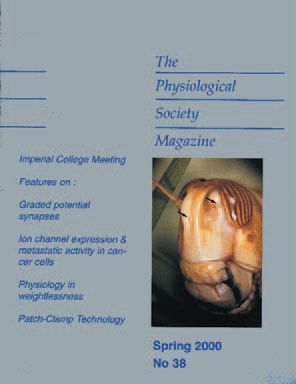

Bill Winlow, 1999 – 2003
Before putting pen to paper, I read all the comments from previous Editors and it’s interesting to see different people’s perceptions of how the magazine has developed over the past 20 years.
I can probably thank (blame?) Saffron Whitehead for convincing me of what a good idea it would be to become Editor of the magazine. She mentioned all the plusses, including being a member of the Physiological Society Committee, but not all the headaches.
On taking on the job, I had support from Craigie Chappas as editorial assistant in the London Office. We were both new to the job and both a bit terrified at the prospect of producing issue number 34, but it went reasonably well and by the time of the millennium issue (Winter 1999) we were confident enough to add gold to the original blue of the front cover. After that we started changing the colour with every issue, but retained the original format. After much sterling service, Craigie left for another job after issue 40 (Winter 2000) and, in the spring of 2000, Sheila Greaves took on the role of Magazine Coordinator, a title we later changed to Executive Editor.
At this point those of us on the magazine Editorial Board were wondering about a much more radical makeover of the magazine and Sheila was instrumental in the decisions that resulted in the new format which we introduced in the winter of 2001, with issue 45. We also changed the name to Physiology News. Sheila moved on at the end of 2002 and Linda Rimmer, from the Cambridge office, took over from issue 49 in the winter of 2002. Since then Linda has taken the entire magazine layout in house and we have found another printer. The result is that the page charges for Physiology News are half of what they were previously. Hopefully, Physiology News can eventually pay for itself through advertising, but that is a goal for the incoming Editor, Austin Elliott, to realise if he wishes to!
In concluding, things have got easier as the magazine has evolved over the last 20 issues. We now have lots more articles in the pipeline, thanks to the efforts of the Editorial Board and I hope that Society Members feel that it continues to provide useful information. For all the brickbats, and occasional typos, the last 5 years have been fun and the experience has led me on to pastures new as a medical writer. Good luck, Austin, for the next few years.
